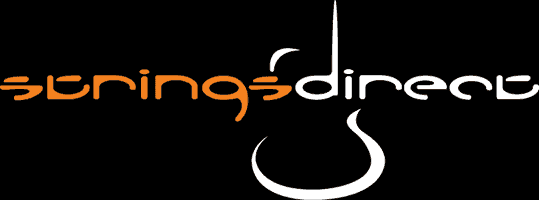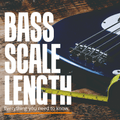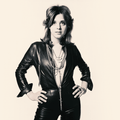String Gauge of the Blues Greats
By Strings Direct – 29 August, 2023

The world of guitar strings is not always easy to navigate. As is often the case with guitar gear, when it comes to picking the right guitar strings, there is an overwhelming amount of choice. Not only do strings come in different gauges, they are also wound in different ways and made from different materials.
In my last article, I explored the topic of string gauge and the potential benefits for blues guitarists of opting for lighter gauge strings. Today I am going to dig down into the topic of string gauge in a little more depth. Specifically, I am going to look at the string gauges used by some of the greatest blues and blues rock guitarists of all time.
This is partly for academic interest. I love to learn about the gear that different guitarists use, and how this impacts their tone and playing style. More importantly though, I hope the information outlined here will help you when you are experimenting with different gauge guitar strings.
After all, whenever you are thinking about buying a new piece of gear - be it something as small and inexpensive as a new pick, or as significant as a new guitar - I think it is always useful to look to your heroes for inspiration. And whilst copying your blues guitar heroes certainly doesn't guarantee that you will be able to create killer blues tones, it will set you on the right path.
It is worth noting that string gauge is just one of the various factors to take into account when looking at strings. And so in future articles I will address areas like string material and winding, and the impact these have for blues guitarists.
However before doing so, I think it is worth looking at string gauge for a little bit longer. This is because string gauge is one of the main concerns for players when they are looking at new strings. Altering or experimenting with different gauge strings has an instant impact on how your guitar feels to play. And this in turn also has an impact on the tone you create.
So if you are still experimenting with different gauge strings - or if you don’t know where to start when it comes to string gauge - here I have compiled the string gauges of some of the greatest blues and blues rock guitarists of all time.
I have categorised guitarists by the string gauge they play - and where possible I have linked to specific string sets, or similar string sets that will help you to recreate the string setup of any given player.
So whether you are trying to recreate the tone of your favourite guitarist, or you are just looking for inspiration more broadly, I hope the information in this article helps.
Here are the guitar strings used by some of the best blues and blues rock guitarists of all time:
Light gauge guitar strings
When we think about the string gauge of blues guitarists, we tend to think of the heavy gauges of players like Stevie Ray Vaughan. Yet a wide range of blues guitarists have favoured strings on the lighter side of the spectrum. Some of the most notable of these are as follows:
- Billy Gibbons is famous for playing very light gauge guitar strings. Following a conversation he had with B.B. King in the 1970s, during which King told Gibbons that he need not work so hard with heavy gauge strings, Billy Gibbons adopted very light guitar strings. His Signature Set runs from .007-.038!
- Jimmy Page has long used Ernie Ball Super Slinky strings, which run in gauge from .009-.042
- From 1970 and up until fairly recently, Eric Clapton also used Ernie Ball Super Slinky strings. He now plays slightly heavier gauge strings, using Ernie Ball Regular Slinky strings, which run in gauge from .010-.046
- Peter Frampton uses .009-.042 gauge strings, choosing to play either Ernie Ball Super Slinkys or D’Addario XLs.
- Joe Perry uses a variety of Ernie Ball Strings in different gauges, depending on which guitar he is playing. These go as low as .008s (Extra Slinkys), up to .010s (Regular Slinkys).
Medium gauge guitar strings
Many famous blues and blues rock guitarists take a middle of the road approach when it comes to their string gauge. So when you are looking for your next set of strings, don’t feel compelled to only look at the different ends of the gauge spectrum. Some notable blues and blues rock guitarists who play medium gauge strings are as follows:
- Eric Johnson has long used GHS Strings. For the majority of his career, his ‘go-to’ set were the GHS Nickel Rockers. These run in gauge from .010-.046. He now has his own Signature Set of strings, which are slightly heavier on the bass strings and which run from .010-.050.
- Robben Ford has used D’Addario strings for the last 20 years. He plays D’Addario EX110 strings which run from .010-.046.
- Like Eric Johnson, David Gilmour has also been a longtime patron of GHS Strings. He started using GHS Boomers when recording The Wall, and he now has his own Signature Set. These run in gauge from .010-.048.
- Gary Moore always played using Dean Markley strings. He used a set of .010-0.52 gauge strings for the majority of his career, before dropping down to .009-.048 gauge strings following a hand injury.
- For the last 15 years, John Mayer has played Ernie Ball Strings. He sometimes changes gauge depending on the scale length and feel of his guitar, though typically he plays Regular Slinkys. These run in gauge from .010-.046.
Heavy gauge guitar strings
If you have a heavy and physical playing style, or if you like to tune down and play in Eb, then you might be looking at using heavier gauge strings. Some notable blues and blues rock guitarists that have used and continue to use strings on the heavier side of the spectrum are as follows:
- Stevie Ray Vaughan is probably the blues guitarist most famous for using very heavy strings. Although the guitar string gauges he played varied, the set he most commonly used ran: .013, .015, .019 (plain), .028, .038, .058. Apparently he wasn’t strongly associated with any single brand of string, though he often used GHS Strings, as they were readily available.
- Joe Bonamassa has long used Ernie Ball Strings, which he typically plays in a gauge that runs from .011-.052. In his own words: ‘I find that the resistance (with 11s) is adequate where I don’t overplay. I can dig in and I’m not over-bending, and I’m not playing out of tune’. If you want to recreate Bonamassa’s setup, a set of Burly Slinkys or a Strings Direct Custom Set would make a great choice.
- Slash typically plays in Eb, and so uses slightly heavier gauge strings to account for the reduced tension of tuning down a half-step. He has a Signature Set of Ernie Ball Paradigm strings, which run in gauge from .011-.048.
- Robert Cray uses D’addario strings in a custom gauge, which runs as follows: .011, .013, .018, .028, .036 and .046. In this way he uses quite a heavy gauge on the treble strings, and a more moderate gauge on the bass strings. D’Addario EXL115 Strings (.011-.049) would make a great choice if you want to replicate Cray’s setup.
- Philip Sayce plays D’Addario Strings, either in an .011-.054 gauge, or a .010-.054 gauge. He opts for the latter if his hands are sore from performing and he wants something easier on his fingers when playing live. If you want to replicate Sayce’s approach and go for heavier strings, then a set of either D’Addario EX116s or EX117s would work well. Alternatively, if you want to play a lighter gauge on top, then a set of D’Addario EXL140s would make a great choice.
Mixed gauge guitar strings

For a lot of guitar players, mixed gauge strings offer a ‘best of both worlds’ solution. Most mixed gauge string sets have medium or light gauge treble strings, and then slightly heavier bass strings. This allows guitarists to bend and apply vibrato with ease, whilst being able to enjoy the fullness and resonance of the heavier bass strings Some of the most famous blues guitarists who used and continue to use mixed gauge strings are as follows:
- B.B. King played a set of mixed gauge strings, which ran as follows: .010, .013, .017, .030, .044. .054. So he had his guitar set up with a medium gauge on his top strings and a heavy gauge on his bottom strings.
- Reportedly Albert King played strings that ran from .009-.050 gauge. So there was a big contrast between his treble and bass strings. His treble strings were really quite light, whereas he used a heavy gauge on his bass strings.
- Jimi Hendrix, Duane Allman, Roy Buchanan and Rory Gallagher all played using ‘Fender Rock N’ Roll 150 Strings’. These ran in gauge from .010-038. So somewhat unusually they were medium gauge on the treble strings and then quite light gauge on the bass strings. Fender no longer produces these particular strings, but they do offer a set of Jimi Hendrix Voodoo Child strings in gauge .010-.038. So if you are looking to replicate the gauge these players used, this set could be a great option.
- Lenny Kravitz has long played D’Addario strings. Over the course of his career he has experimented with a variety of string sets, although he most frequently uses D’Addario EXL140s. These run from .010 on the top E, to .052 on the bottom. So he is playing medium gauge strings on the treble strings and fairly heavy gauge strings on his bass strings.
Putting it all together
From an academic point of view, I think it is interesting to have a greater understanding of the different guitar strings that all of these players use(d). More importantly though, I hope the information outlined here helps you to get closer to choosing the right set of strings for your setup.
Guitar strings have an impact on both tone and playability. And whilst in some cases the strings that these guitarists use(d) might come as a surprise, often the choices are quite obvious.
For example, Stevie Ray Vaughan’s very heavy gauge guitar strings suited his aggressive and physical playing style. Had he used lighter guitar strings, he would not have been able to play in the way that he did, and his tone would have been quite different.
Conversely, guitarists like B.B. and Albert King used lighter gauge strings on their G, B and E strings, and heavier gauge bass strings. This allowed them to bend and apply vibrato with ease, whilst benefiting from a fuller and more resonant tone when playing chords.
All of this is to say, the gauge of your strings makes a difference. And so if you have a favourite player - the tone or style of whom you are working on recreating - it is worth looking at some of the more niche elements of their setup.
Some closing thoughts…
Having said that, I would recommend using the list above for inspiration and experimentation, rather than feeling like you need to slavishly follow the setup of any single player.
To provide you with a personal example - a few years ago I started to experiment with different brands and gauges of guitar strings. Matt Schofield is one of my favourite modern blues guitarists. He is a killer player and he also has a beautiful blues guitar tone. I discovered he uses Curt Mangan Strings and so I went out and bought a set of his Signature Strings.
I loved the tone and feel of the Curt Mangan strings, and I have used them ever since. But the gauge of those strings was a little too heavy for me, so I dropped down to .010s instead.
Had I not been inspired by Schofield’s tone, I probably would have never tried Curt Mangan Strings. And they’re now my ‘go-to’ strings of choice!
Go through the same process of experimentation and use your blues guitar heroes as inspiration for the starting point. Just make sure that you don’t get so focused on the exact setup of any player that you lose sight of what feels comfortable and sounds good to your ear.
Provided you are able to strike this balance, I am sure it will lead you to consider some gauges and possibly brands of string that you have never tried before. And who knows what this could do for your tone and playing...
* * * * *
References
Premier Guitar
Guitar Player
Jeff Perrin Music
Strings Direct
Equipboard
Premier Guitar
* * * * *
About the Author

The Happy Bluesman
www.happybluesman.com
@happybluesman









